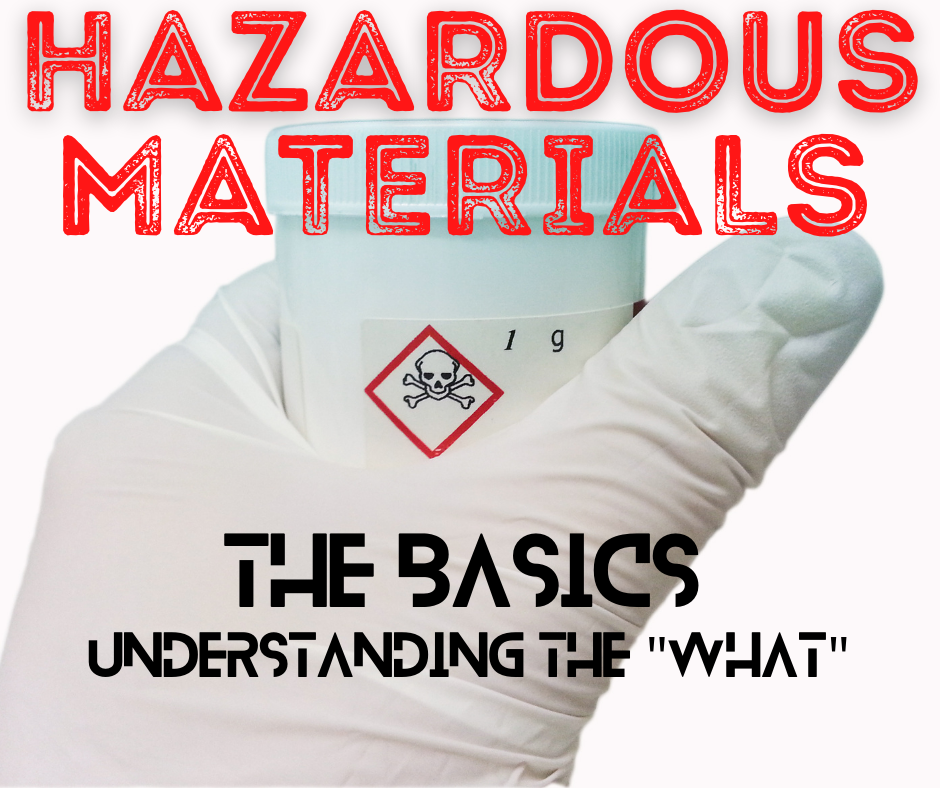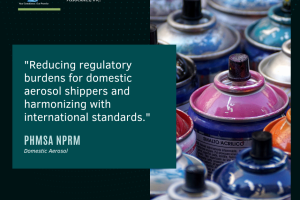Hazmat 101 Pt. 1

The Basics- The What
One of the most common questions we receive here at Transportation Compliance Associates, Inc. comes in the form of:
“Who is considered a hazmat employee?”
“How do I know if I need Hazmat training?”
“Who needs hazmat training?”
Or some form of that question. To answer that question, I believe we first need to understand what we are dealing with. We must first understand what is considered a hazardous material?
Often mistakenly used interchangeably among those not fully aware of the costly mistake they could be making, a hazardous chemical, substance, and material differ both in their meaning and compliance standards.
Hazardous Material- A substance or material that the Department of Transportation has determined is capable of posing an unreasonable risk to health, safety, and property when transported in commerce, and has been designated as hazardous.
Hazardous Chemical– Hazardous chemical means any chemical which is classified as a physical hazard or a health hazard, a simple asphyxiant, combustible dust, pyrophoric gas, or hazard not otherwise classified. As defined by 29 CFR 1910.1200(c)
Hazardous Substance– Is defined by the EPA as any substance defined as hazardous through its designation in 40 CFR 302.
Although each one may reference each other in their regulations, it would be a costly mistake to interchange their meanings and compliance standards.
Now that we understand the difference between the 3, let’s look at the “What” a little deeper. Did you know there 9 different hazard classes; each with their own subdivisions? Listed below we will examine them a little closer:
Hazard Class 1: Explosives
- 1- Mass explosion hazard- ex. Dynamite
- 2 – Projectile hazard- ex. Ammunition
- 3- Predominately fire hazard- ex. Commercial grade fireworks
- 4- Minor blast hazard- ex. Consumer grade fire works
- 5- Very insensitive explosives- ex. Ammonium nitrate fule oil mixture
- 6- Extremely insensitive detonating substances- ex. “Blanks” for action movies
An easy way to remember the 6 sub divisions of class one is the Acronym Many, People, Find, Me, Very, Exciting.
Hazard Class 2: Gases
- 1- Flammable gas- ex. Spray paint
- 2- Non-flammable compressed gas- ex. Oxygen generators
- 3- Poisonous gas- ex. Chlorine gas
Hazard Class 3: Flammable Liquids
- All flammable liquids
Hazard Class 4: Flammable Solids
- 1- Flammable solid- ex. Match sticks
- 2- Spontaneously combustible material- ex. Oily rags
- 3- Dangerous when wet material- ex. Lithium metal
Hazard Class 5: Oxidizing Substance and Organic Peroxide
- 1- Oxidizer- ex. Hydrogen peroxide
- 2- Organic peroxide- ex. Ammonium nitrate fertilizers
Hazard Class 6: Poisonous/Toxic and Infectious Substances
- 1- Poisonous/Toxic material- ex. Nicotine
- 2- Infectious substances- ex. Covid-19 test samples
Hazard Class 7: Radioactive Material
- Signs containing tritium
Hazard Class 8: Corrosive Material (liquid and solids)
- Lead acid batteries
Hazard class 9: Miscellaneous Hazardous Material
- Air bag modules and lithium batteries
An easy way to remember the 9 hazard classes is the acronym: Every, Good, Fire, Fighter, Oughta, Practice, Recognizing, Corrosive, Materials
Now that we have a better foundational understanding of what we may be shipping or transporting, we can certainly answer the “WHO” portion of hazardous materials. If you enjoyed the first part of this series, make sure to stay tuned for our next installment to find out “who needs hazardous materials training?”
And if you’re already a hazardous materials expert, make sure to opt-in to our newsletter or follow us on our Facebook, LinkedIn, or Twitter accounts to stay ahead of the curve. So, whether you need one class, a multi-business training package, or complete compliance solution, let Transportation Compliance Associates, Inc. take the guess work out and help you achieve all your safety and compliance goals. For a FREE consultation call us at (724) 899-4100 or check us out at learnhazmat.com and one of our team members will help you decide what industry leading training and compliance program best suits your needs.
Tag:29 CFR, 40 CFR, EPA, Hazard class, Hazmat training, PHMSA




